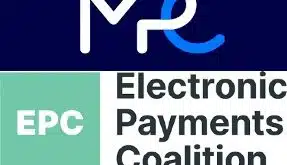For all the talk about independent software vendors and value-added resellers as an alternative channel for acquirers to sign up new merchants, the ISV/VAR share of the market is actually quite small, according to research released last week by Annapolis, Md.-based First Annapolis Consulting.
The research does indicate, however, that software developers and dealers will account for a larger share in months to come as merchants resume buying so-called integrated point-of-sale equipment. This trend had been slowed by the transition to EMV, since non-integrated terminals are easier to certify, First Annapolis says.
ISVs and VARs are signing between 150,000 and 200,000 merchant accounts yearly, or about 9% of all merchant accounts, First Annapolis estimates. That leaves 91% being signed by banks and independent sales organizations. With respect to overall merchant dollar volume, developers and dealers account for between $100 billion and $150 billion, or just 4% of the total market, the firm figures.
The ISV-VAR marketplace remains highly fragmented, with more than 10,000 active developers. More than 60% of these players have annual revenue of $500.000 or less, First Annapolis says. But the channel has grown more prominent in recent years, with several processors acquiring developer talent to reach new merchants. “Acquirers have, rightly we think, recognized the developer market as a distribution opportunity,” says Brooke Ybarra, a senior manager at First Annapolis, in a report issued about the research.
She cites as relatively recent examples Vantiv Inc.’s acquisitions of Mercury Payment Systems LLC and Element Payment Services, which led to the formation of Vantiv Integrated Payments. Similarly, Global Payments Inc. created its Open Edge unit after acquiring Accelerated Payment Technologies and PayPros.
And, while banks and ISOs still account for the bulk of merchant business, ISVs and VARs are likely to enjoy fast growth, experts say. “It’s growth that makes the big story on the VAR/ISV channel,” says Rick Oglesby, president of AZ Payments Group LLC and a senior analyst for Centennial, Colo.-based Double Diamond Payments Research, in an email message. “The channel is growing at a rate that is approximately [three times] the growth rate of acquiring as a whole. It’s been a select number of companies that has really focused on the channel, but those that have really focused there have achieved much stronger than average growth. The fact that the market isn’t fully penetrated is what makes the opportunity so big.”
Also, ISVs and ISOs are increasingly working together in such a way that it’s hard to speak of distinct shares, Oglesby points out. In many cases, they work in tandem in what he calls a “two-tiered” sale, with ISOs selling the merchant account and ISVs or VARs selling the payments software. In time, he predicts, the two worlds will become one. “We used to look at these channels as completely distinct entities, but over time they will be one and the same,” he says.
For now, Ybarra predicts dealers and developers will benefit from increased share as merchants increasingly turn to integrated POS systems, which build payments functionality into the larger store POS flow. This trend, she says, slowed last year as merchants turned to standalone payment terminals to speed certifications for EMV, but will accelerate as merchants emerge from the EMV transition.
“We expect [integrated POS] growth to resume,” she says in her report. “With it, ISV and VAR distribution will make up a bigger share of new merchant flow as acquirers currently pursuing the strategy expand its use amid their broader sales tactics and more acquirers follow the leaders into this channel.”




